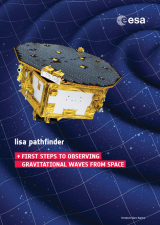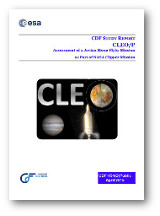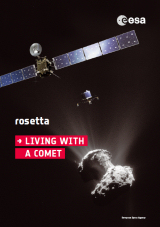ESA Science & Technology - Publication Archive
Publication archive
Publication archive
Document reference: CDF-154(D)
This document is the assessment study report for CLEO/P, a Jovian moon flyby mission that could be part of the NASA Clipper mission.
As the junior partner to the Clipper mission ESA are considering a potential mission of opportunity that could be considered by the science community in future mission proposals, to either carry out fly-bys of the Jupiter Moon Io — the subject of this study — or Europa, or possibly to impact Europa — the subject of a separate study.
This particular study was performed to formulate a small satellite (250 kg) concept. The main premise was to have this small satellite attached to Clipper during launch and interplanetary transfer and released by Clipper once it arrived at the Jovian system. Full details are available in the report.
The report has been prepared by the ESA concurrent design facility.
--- Remainder of abstract truncated due to character limitations ---
 |
Table of contents:
- A quest for silence
- In the realm of gravity
- The gravitational Universe
- How does it work?
- Building LISA Pathfinder
- Launch
- A physics laboratory in space
- An international enterprise
Published online 14 April 2015 in Science Express
Knowledge of the magnetization of planetary bodies constrains their origin and evolution, as well as the conditions in the solar nebular at that time. Based on magnetic field measurements during the descent and subsequent multiple touchdown of the Rosetta lander Philae on the comet 67P/Churyumov-Gerasimenko, we show that no global magnetic field was detected within the limitations of analysis. The ROMAP suite of sensors measured an upper magnetic field magnitude of less than 2 nT at the cometary surface at multiple locations with the upper specific magnetic moment being < 3.1·10-5 Am2/kg for meter-size homogeneous magnetized boulders. The maximum dipole moment of 67P/Churyumov-Gerasimenko is 1.6·108 Am2. We conclude that on the meter-scale, magnetic alignment in the pre-planetary nebula is of minor importance.Rosetta is ESA's comet-chasing mission to 67P/Churyumov-Gerasimenko. Launched on 2 March 2004, the spacecraft travelled for 10 years and required three gravity-assist flybys at Earth and one at Mars before homing in on its target.
Comets are time capsules containing primitive material left over from the epoch when the Sun and its planets formed. By studying the gas, dust and structure of the nucleus and organic materials associated with the comet, via both remote and in situ observations, the Rosetta mission could be the key to unlocking the history and evolution of our Solar System.
Table of contents:
- Europe's comet-chaser
- The long trek
- A human endeavour
- Rendezvous with a comet
- Pull-out poster: Rosetta mission selfie
- Landing on a comet
- The Rosetta orbiter
- The Philae lander
- Getting to know the comet
- An evolving story
- An international enterprise
- Join the adventure
--- Remainder of abstract truncated due to character limitations ---
This document presents the results of a study, performed by ESA's Concurrent Design Facility (CDF) in 2014, that analysed the feasibility of a 150 kg-class rover compliant with a potential Mars Sample Return mission and its "FAST" mobility performance requirements. The rover is also able to provide in-situ science for supporting future Mars robotic exploration. For this study, a landing platform delivered by NASA/JPL was considered, in the view of a possible ESA/NASA cooperation in the 2024 timeframe.


